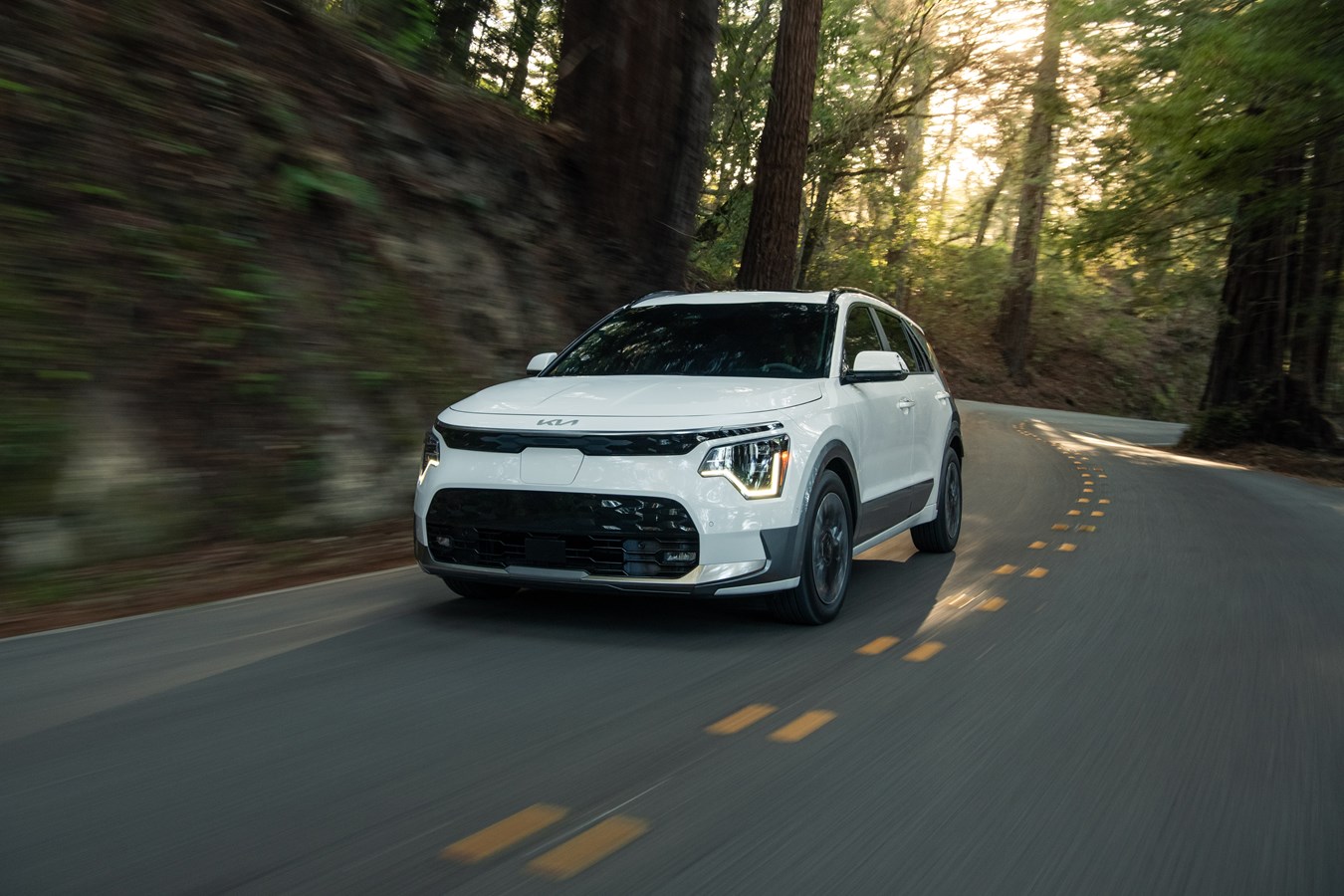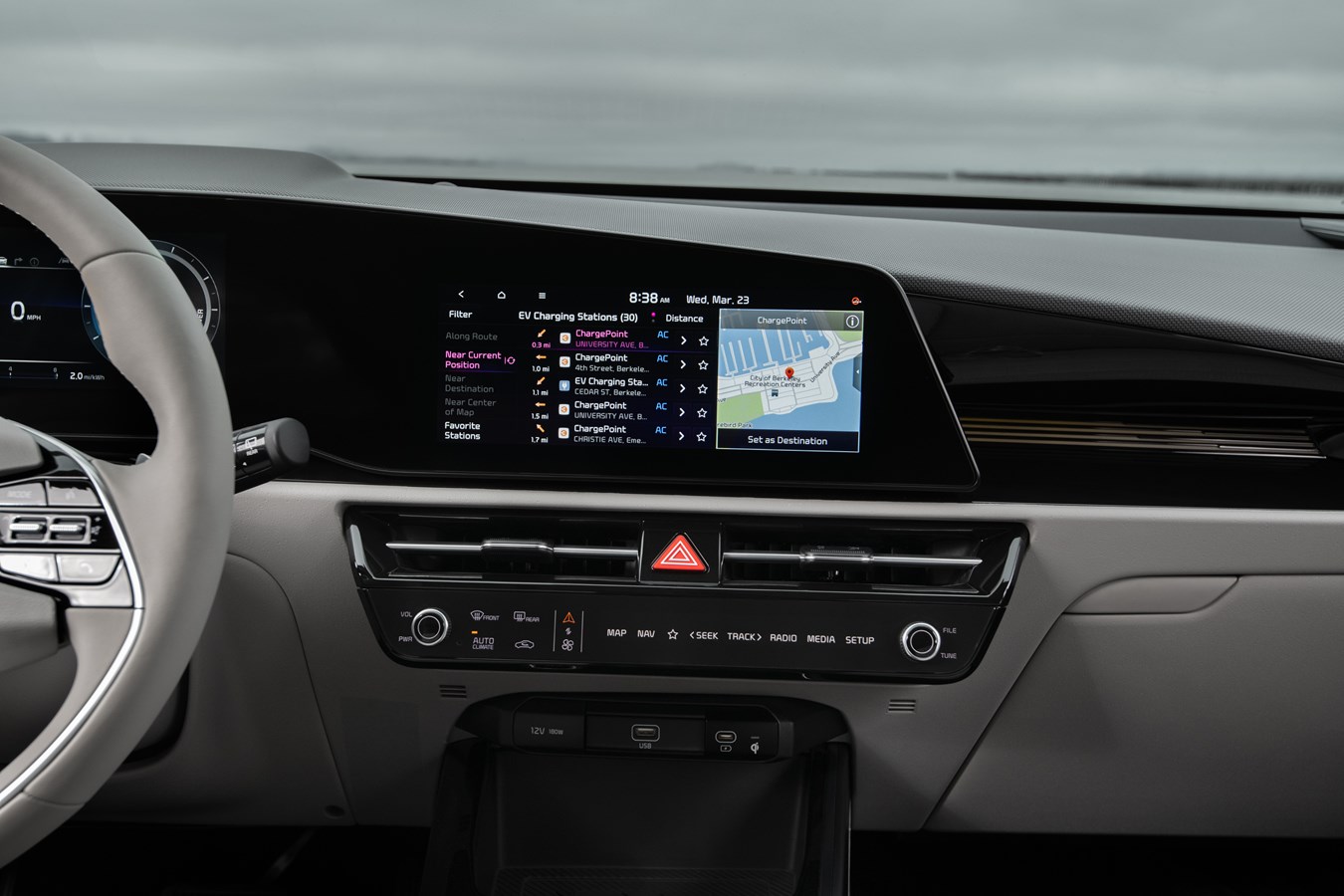
The Roadmap to Assurance: Kia's Electric Vehicles Unveiled
As the global automotive manufacturing landscape undergoes a paradigm shift, Kia's commitment to producing electric vehicles (EVs) that not only meet the demands of consumers but also prioritize the safety of its drivers, is helping to set a new benchmark in the industry. Kia's journey is not just changing the way we drive, but also redefining what it means to drive. From cutting-edge technology to rigorous safety standards, Kia is helping drive change on many fronts.
Seamless Integration of EV Features
What helps set Kia's EVs apart from the competition is its strategic engineering, including its significant incorporation of ultra-high-strength steel in its vehicles that enhances the structural integrity of its cars. While both EVs and traditional vehicles need regular upkeep, EVs boast significantly fewer moving parts, generally translating to less scheduled maintenance. EVs can have as few as 20 drivetrain components compared to approximately 200 or more in conventional (internal combustion) models.
Whether you're a first-time EV owner or a seasoned EV driver, Kia's commitment to intuitive design and uncomplicated functionality shines through in its electric vehicle line-up, including the EV6, Niro EV, and EV9. This attention to detail, especially in the placement of select controls and simplicity in EV charging, has garnered well-deserved praise for the automaker.
As an EV owner, the transition from a conventional gas-powered vehicle to an electric one can be a bit daunting at first, but Kia has made the learning curve remarkably gentle. The primary controls, including the shifter, HVAC, audio, wipers, seats, windows/locks, and even the fuel door release, are strategically located where customers usually expect to find them.
Charging an electric vehicle is sometimes seen as complex, but Kia has simplified this process to make it more accessible. Kia's EV models feature smart and intuitive fuel door release placement, designed for easy access. Both the door and an instrument panel button offer an easy release.

Monitoring Your Electric Power
Keeping track of your electric vehicle's battery charge level and remaining range can help reduce the stress of the journey. Kia has incorporated a user-friendly approach to this aspect as well. You can easily monitor your battery's state of charge (SOC) and distance to empty (DTE) through a graphic gauge in the instrument cluster or center display screens. For added convenience, Kia has developed the useful and intuitive "Kia Access" app, allowing you to stay connected and informed about your EV's statistics.
Thoughtful Design
Steven Center, Kia North America's chief operating officer, notes that "foundationally, all Kias are equipped with 3-point seat belts, front/side/curtain airbags, as well as anti-lock brakes, electronic stability control, and the Tire Pressure Monitoring System. But other safety factors engineered into Kia vehicles include a high proportion of ultra-high-strength steel, which helps strengthen the vehicle while limiting mass (or weight), making the cars fundamentally strong and light." Center also added that Kia's EVs implement specific measures that safeguard the high-voltage batteries, ensuring secure current flow within the vehicle.

A Seamless Driving Experience
Steven Center explained, "Kia's EV design is intuitive, with EV features and functions quite easy to learn as a first time EV owner." Kia's cutting-edge technology transforms the driving experience, in selected vehicles, with its available Augmented Reality Heads-Up Display (AR HUD), which displays helpful information, such as speed, navigation guidance, signage, and pedestrian alerts, directly within the driver's line of sight*. Another innovative feature is available Forward Collision-Avoidance (FCA), which is designed to detect cars, pedestrians, and cyclists in certain circumstances.**
On the highway, certain Kia vehicles are equipped with NSCC-R (Ramp)***, which can help slow the vehicle before it enters an off-ramp on the highway. If there is a curve in the ramp, it is designed to slow the vehicle further and maintain the designated speed limit through the curve. As the vehicle exits the curve, NSCC-R returns the vehicle to its original speed setting.

Company Collaboration
Steven Center highlighted that "internally, Kia safety engineering efforts are achieved through close collaboration across multiple departments, such as corporate and research, ensuring company-wide work and engagement on safety efforts." This internal collaboration allows Kia to define its safety targets.
Kia's collaborative approach allows the company to explore various technologies such as Vehicle-to-Everything (V2X) communications, autonomous driving, and next-generation Augmented Reality Heads-Up Displays (AR HUD). Steven Center also emphasized that "crash avoidance and pedestrian protection remain NHTSA priorities, and Kia safety engineering is addressing this now and is expected to continue to prioritize this in the future".
In a world where technology is evolving fast, EVs must keep pace with, and even remain steps ahead of the changing vehicle landscape. Kia is taking these steps through continued leading-edge research, collaboration and technological development.
* Failure to pay attention to travel conditions and vehicle operation could result in loss of vehicle control. Always drive safely and use caution.
** When engaged, Forward Collision-Avoidance Assist-Junction Turning is not a substitute for safe driving and may not detect all objects in front of the vehicle. Always drive safely and use caution.
***When engaged, Navigation-based Smart Cruise Control (NSCC) is not a substitute for safe driving and cruise-control procedures. This is not an auto-pilot feature. It may not detect every object around the vehicle. Always drive safe.